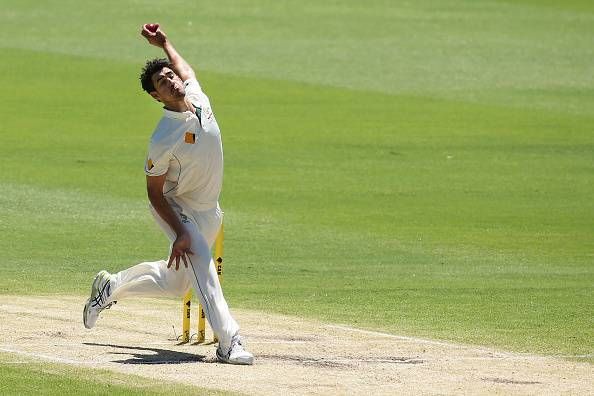
Can you really watch the ball when it is coming at 90 mph?
There is a cliché in cricket that every coach, commentator and even audience members keep repeating – watch the ball. But is it really possible to do that when bowlers are running in and bowling deliveries in excess of 90 mph?
Is it possible to watch an 85 mph or 90 mph ball?
Scientists say that we humans are equipped with rapid eye movements which are also called saccades. When you shift your gaze from one point of a moving object to another point where the object is moving, it takes 0.3 seconds.
And an 80 mph (or 128 kmph what is called medium pace. It doesn’t qualify as pace) is moving 4 yards or 3.66 meters per 0.1 of a second.
The total pitch length is 22 yards or 20.11 meters. So an 80 mph ball reaches the batsman in 0.57 seconds, out of which 0.3 seconds are consumed in shifting the gaze. So effectively, a batsman has only 0.27 seconds to watch an 80 mph ball.
So how do batsmen cope with playing even higher speed balls, and how does batting look so easy to spectators like us?
The best batsmen pick up cues from the bowler, his hand position, the dip of the shoulder position and his head position, and they work out pretty early where the ball is going to pitch. They watch the ball getting released from the hand and then their gaze shifts to where they anticipate the ball to pitch.
That enables them to have a bit more time to play the shot than an average batsman. An average batsman or rookie will try to see the ball all the way and has less time to play.
Better players don't look at the ball as much as the less skilled batsmen. The best batsmen have to make these predictions subconsciously. Here is a key finding – the best batsmen may not have the best eyesight but they have the skill to anticipate almost everything about the ball in the remaining 0.27 seconds.
We all know that since 1877 the only thing that gets the batsman out is length. Therefore, the batsman has to get the length right and next the line to take one of the following six decisions:
- Leave the ball or play the ball
- Play on back foot or front foot
- Play a shot or not to play a shot (just block)
The batsman has to take this decision in less than a second and if he takes any decision wrong, he will be dismissed. Further, bowlers do things subconsciously (offer clues) that the best batsmen are able to pick and anticipate.
That’s why timing is the most important part of batting; it is a skill what everybody doesn’t have. This is the reason why a moving ball always creates a problem for the best of the batsmen; the time to anticipate is the same while you have one more variable to consider for decision making.
We may call it extra sensory perception (ESP) – the thing that the best batsmen attain by the virtue of experience, practice, God's gift or talent.
The rapid eye movement and ability to anticipate are relevant in other sports too. For example, Cristiano Ronaldo was able to hit the cross in goal when they turned the lights midway but an average player completely missed.
Different batsmen have different ways of doing it. Desmond Haynes tried to watch the ball so closely that he would look to read the writing on one side of the ball. Kevin Pietersen watched the ball right from where the bowler started running, ball position in his hand, the release and which side was shining.
Ricky Ponting has a system where he watches the ball three times – at the start of the run-up, half the way down and then at release. He has a sort of checklist which he ticks every time. Andrew Strauss looks at a vague area; he doesn’t look at the ball precisely as the bowlers are running in to bowl.
So the next time when somebody says watch the ball, just watch how the batsmen actually watch the ball.
